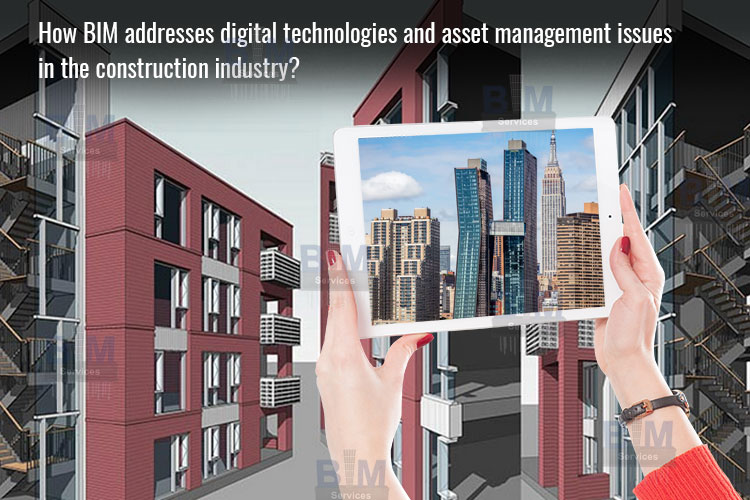How BIM addresses digital technologies and asset management issues in the construction industry?

Overview
Digital technologies facilitate the improved way of working, employee engagement, and delivers amazing user-experience. Intranet builds a connection between the tools, people, business, and its employees, which helps in doing work in a digital environment.
Digital technologies have changed the way we work and are making its digital journey in the construction industry as Building Information Modeling (BIM), which provides new opportunities and reshape the process of building.
The construction industry uses digital technologies which are connected by a system of sensors, artificial machines, mobile devices, and new software applications integrated to the core system of BIM. It enables companies to boost productivity, manage complexity, reduce project delays, and enhance safety and quality.
Digital technologies are pervading industrial landscape which applies to three phases of the construction industry – design, construction, and operations. Digital transformation can be applied to BIM by using virtual reality and information to stimulate the assets of the lifecycle. 3D printers and scanners can help make a digital model of any structures or building, allowing creating a better user-experience and conducting constant monitor of wastage of materials.
Asset Management is a strategic approach in managing assets to enable the achievement of business objectives. It seeks to optimize cost, risk, and performance over whole asset lifecycle, at portfolio system, and individual asset levels.
Role of BIM in Digital Technologies
Mobile user coalition and augmented reality allows real-time communication with remote construction workers and maintenance crew, whereas virtual reality and stimulation improve the decision, planning, and training.
The construction project that has been made on the 3D Model, which is carried forward through the BIM process when collaborated with digital technologies, can bring the immense potential of quality control, cost estimation factor on process and material. Due to some tools, it can boost the filed productivity such as AI and drone that can maintain the job of the workers on-site and off-site.
Role of BIM in Asset Management
BIM and asset management support and works collaboratively in bringing the existing assets into BIM, developing new assets into BIM and manage new & existing assets into BIM.
The information collected and managed through BIM includes:-
Asset register or inventory, Topographic data on the assets, asset condition data, asset capability information, asset performance service levels, life expectancy data of equipment and materials, contextual data, and much more.
Asset Management carried out in BIM can enhance decision-making, planning, and execution of the asset activities. It gives relevant information according to the stages of the project lifecycle.
BIM Modeling Services, in collaboration with facility managers, helps to analyze asset management for many years. Asset management can replace hard-copy to close-out package with an electronic version and can provide project related information to maintain the scheduling of the project; data changes can be performed on the asset and give access to all the team associates.
Conclusion
BIM helps in providing accurate, timely data and opportunities to improve the asset management and building operations carried in a project. Digital technologies help to access, create, and use the asset data that can be evaluated in the construction project.